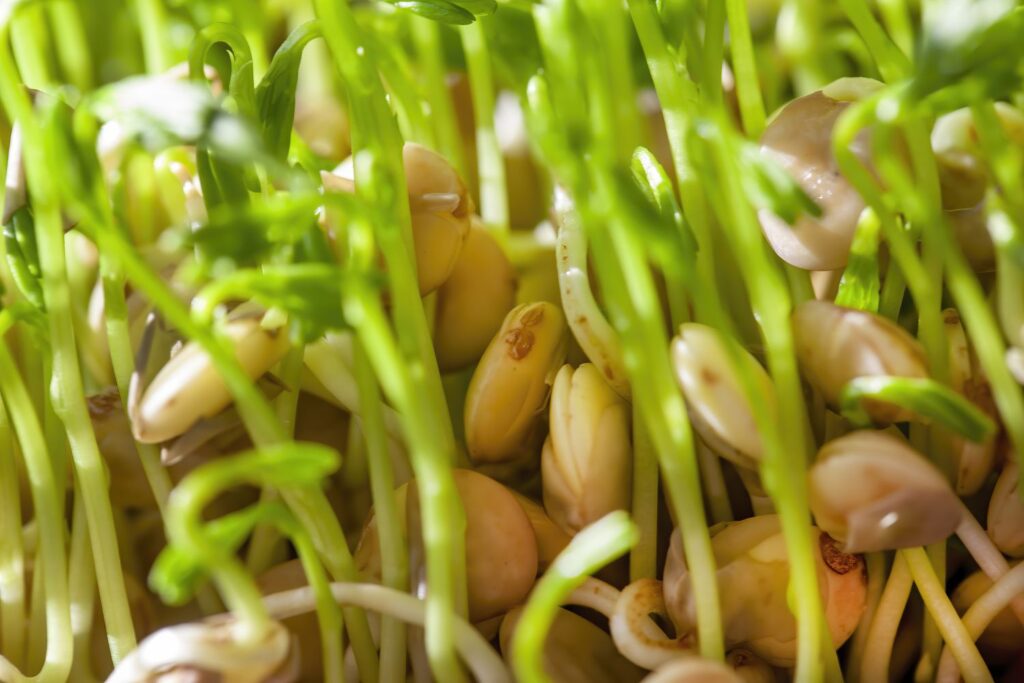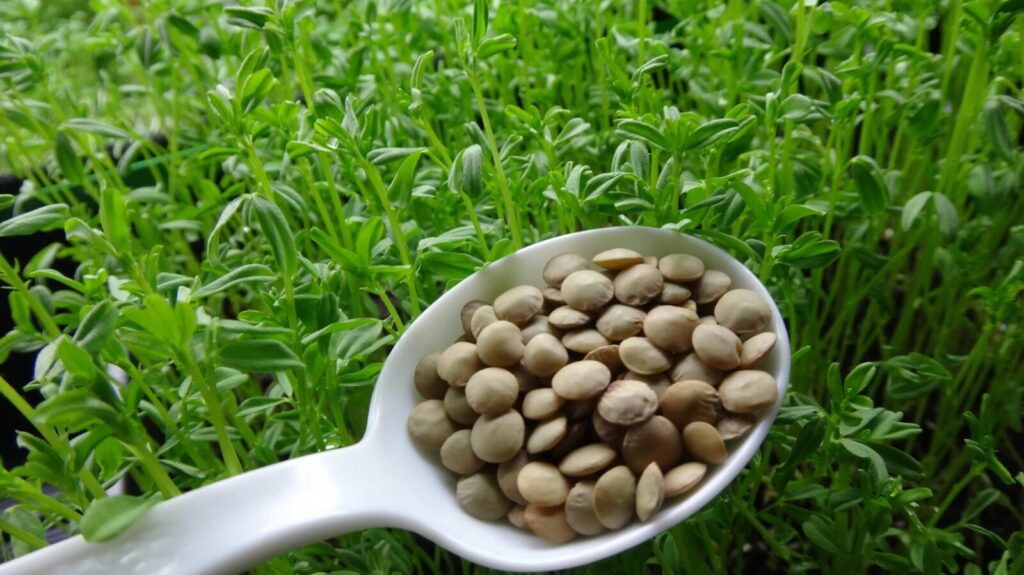About How To Grow Lentils
As per previous articles about the health benefits of grains, we promised you that in our next articles, we hope to discuss how to grow those crops even in your home garden. So, this article is based on how to grow lentils properly correct manner. We have discussed the importance of lentils for health, and from this, you all can know the growing procedure of this grain.
We invite you to read it till the end because you can learn lots of things regarding the growing process of lentils even in your home garden. If you hope to grow lentils on a large scale, be with us till the end. You also can learn lots of things to grow lentils on a large scale.
As lentil is a cold summer grain belonging to the legume family, lentils can be started indoors before transplanting into the garden. So, lentils require about 80 to 110 days to harvest.
Also, lentil is a member of the pea family, they are highly annual. From 18 – 24 inches it grows taller. So, you can understand that they grow limited taller. Lentils contain white and purple pea-like flowers.
Pods are small, broad, and flat and contain one or two flat, lens-shaped seed that is green or yellow to orange, red, or brown.
Lentils .flower from the lower branches up until harvest. Each flower produces a short pod that contains two seeds.
So, before planting lentils we will look into the related varieties of lentils. Without talking we will get to the point.

Related Varieties Of Lentils for Planting
- Brewer: Large, brown, most common variety
- Green Eston: Green, smaller than other lentils
- Red Chief: Light tan coating with a red seed
- Masoor: Red seed, brown coat
- Puy: French lentil; blue-green speckled
- Avondale: A medium-sized green lentil; with a large yield; another common variety in the United States
- Beluga: Black variety; so named because it looks like caviar.
Next, we’re going to discuss the climate requirements that the lentils should be treated when growing lentils. So, how do grow lentils, and what are the suitable climate conditions required for them? So, let’s take a look at those conditions now.
Climate Requirements For Planting Lentils
Lentils require a minimum of 350mm rainfall a maximum of 550mm — in the higher rainfall areas good drainage is essential. Waterlogging will have a great effect on yields and disease spread.
Drought and severe or prolonged hot weather combined with wind, heavy raindrops, or hail can cause a loss in yields through pod cracking.
So, what’s next? The pre-caring for this lentil farming is known as the nursery management of farming lentils. So, if you have read other articles regarding how to grow lentils, you have not seen discussing this factor anywhere else. So, in this article, we hope to discuss this factor with you.
Nursery Management Of Growing Lentils
If you choose your home garden to plant lentils, you must especially be aware of this factor. So, what are those factors? They are as follows,
This procedure of planting lentils is not so difficult. If you have previously planted beans or peas, it is advantageous because planting lentils also has the same procedure. First, you must choose a
Best spot for planting
This will depend on the size of your land area in the home garden. Lentils need loose, well-draining soil that has plenty of organic matter. You want it to be well-draining so the plants don’t get water-logged. They don’t like having wet feet.
Land Preparation For Growing Lentils
These plants can grow in poor soil, but if you want productive plants, enriching the ground is a smart idea. It should have a pH range between 6.0 and 6.5.
So, next, we will take a look at the planting process and spacing process of growing lentils.
Planting Lentils
Lentils are a cool-season crop, so you want to start them before the last frost date in your area. Plan to put them outside 2-3 weeks before this date.
Something else to take into consideration is that it takes 80-110 days for lentils to mature. You need to make sure they’re planted and will be ready for harvest before the first frost date in your area.
Spacing Of Lentils
When you plant seeds, the rows need to be spaced 18-24 inches apart. Young lentil seedlings are frost-tolerant, so you’ll set them out in your garden 2-3 weeks before the final frost date. When your seedlings are sprouted, they need to be thinned out to 4-5 inches apart.
Proper water supply for these plants’ lentils will help you to increase productivity with a higher yield as always. So, do you know the required rate of water supply when growing lentils? So, let’s take a look at those factors.
Water Supply For Lentil Plantation
As with other grain crops, the water supply is a very important factor in obtaining a higher product yield. Continuous normal water supply in appropriate proportions will be very important when planting lentils. So, if you can take the necessary steps for a continuous supply of water, your cultivation of lentils will be very successful.
Weed Control
Lentil is a short-statured crop due to which weeds pose severe competition and reduce crop yields considerably. Various pre-plant incorporation/pre-emergence herbicides such as trifluralin, pendimethalin recommended for controlling weeds in lentils, are effective only for the initial about one month period, whereas lentil is a long duration crop (145 days) and weeds emerging later also compete with crop plants.
Information regarding the use of post-emergence herbicides in this crop, particularly in India is meager. Therefore, the present study was undertaken.
Pest Management And Disease Management Of Planting Lentils
In the case of how to grow lentils, this factor of management of pests and diseases is very important. So, what are the necessary steps you must follow in this procedure?
There are no varieties of lentils that are completely resistant to the disease but some are less susceptible than others and can be planted in areas where the disease is prevalent; a well-timed application of an appropriate fungicide may be enough to control the disease but should be reapplied in the event of persistent wet weather.

Harvesting Of Lentils
We hope to discuss this process in three necessary steps. They’re as follows,
- Try inoculation – Many growers of pulse crops add an extra step to their planting routine: inoculating the seeds with a special bacteria that helps encourage nitrogen fixation, strengthens the plant, and improves the yield.
Inoculate your lentils by mixing the lentil seeds with the inoculant Rhizobium leguminosarum, which is commercially available at many garden stores. Allow the seeds to dry in the shade before planting.
- Follow companion planting procedures. Lentils grow well with most garden plants, since lentils are nitrogen-fixers, meaning they have healthy bacteria-filled nodules on their roots that replenish the soil with necessary nitrogen. Popular companion plants include summer savory and cucumbers.
However, avoid planting lentils next to alliums like onions or garlic (or in a spot that recently grew these alliums) since they can release a chemical that inhibits growth in legumes.
You may also want to avoid planting lentils too close to plants susceptible to the same diseases, like potatoes or soybean plants.
- Consider trellises – Lentil pods can become heavy and weigh down the delicate branches of lentil plants, so using a support structure like a low trellis or tomato cage can help keep your plants upright.
Support structures have the added benefit of keeping your plants’ stems separate, allowing airflow to prevent disease and fostering drying for a quick harvest.
After receiving a quick harvest as you wish, the last procedure of it is the observation of yield. So, how you can recognize that your yield of lentils is in a good position? So, let’s concentrate on this factor for a while.
Observation Of Quick Harvesting Of Lentil Yield
Growth and yield can be decoupled in lentils whereby excessive vegetative growth leads to self-shading, reduced pod and seed set, low harvest index, and higher risk of disease and lodging.
We evaluated the degree of coupling between growth and yield in 20 lentil lines grown in eight environments varying in water and photothermal conditions returning a 10-fold yield range, from 21 to 221 g m−2.
Calibration curves between shoot biomass and canopy cover measured with NDVI and green canopy cover measured with the Canopeo app were improved with canopy height as a multiplication factor returning a 3-D trait. Calibration curves were used to phenotype shoot biomass and calculate the crop growth rate.
Conclusion
So, in this article, we hope you all were updated on how to grow lentils properly. So, we invite you to follow these necessary steps to plant lentils. You can trust every factor which is listed above in this article with total trust.
If you stay with our website and keep in touch with our articles, you will able to know many more important things about every grain in the international market. We hope to bring much more important articles regarding lentils in the future also. So, until next time, we’re stopping here onwards!

